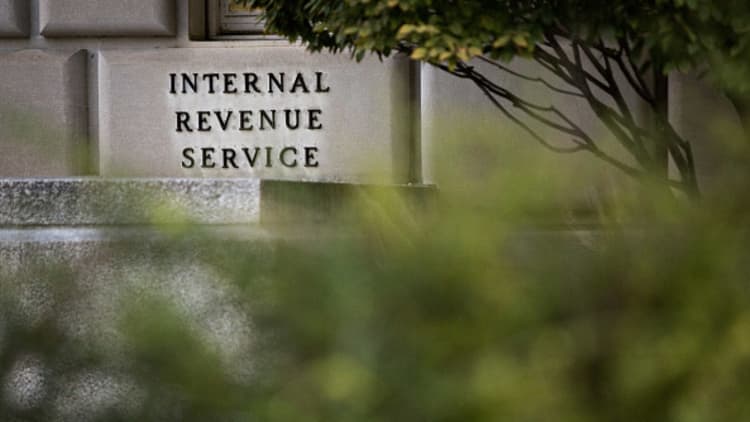If you still haven't filed your 2017 federal tax return after missing the April 18 deadline and you owe Uncle Sam, here's another date you should be aware of: June 14.
After that day, most taxpayers who are in that boat will face a minimum penalty of $210.
"You can avoid some penalties by at least filing your return," said certified financial planner and certified public accountant DeDe Jones, managing director of Innovative Financial in Lakewood, Colorado. "And then if you need to, you can request a payment plan."
Keep in mind that if you're one of the estimated 14 million taxpayers who requested a six-month extension by the spring deadline, you're in the clear for now. Or if you filed your return without paying the full amount you owe, this late-filing penalty does not apply to you.
However, if you are not among the 135 million-plus taxpayers who have filed their 2017 return, it's worth your while to take action now.
The failure-to-file penalty is generally assessed when a taxpayer owes the Internal Revenue Service yet doesn't file a return and has not requested an extension. The penalty is typically 5 percent of what you owe for each month (or part of a month) that your return is late. There is no penalty if you owe nothing or are due a refund.

The IRS steps up its late-filing penalty about 60 days after the April filing deadline. Thus, the June 14 cutoff. Beyond then, penalty is at least $210 unless you happen to owe less than that.
Even if you can't pay what you owe, submitting your return by June 14 will avoid that higher late-filing penalty, which stops accruing once you send in your return.
Keep in mind that the charge for filing late is separate from the one for paying late. Even when taxpayers file on time, not paying what is owed typically results in a penalty of 0.5 percent of the unpaid tax for each month it's late.
So if you file your return now without the full amount owed, you will continue accruing a late-payment penalty.
More from Personal Finance:
Women have $890 billion in student loan debt, the country's biggest share
These five states are the worst for data security
This pressing question about cryptocurrencies still has no answer
On top of that is interest, which currently stands at an annualized rate of 5 percent. This applies to the balance of your unpaid tax bill.
Another reason to file your return even if you can't pay is this: The IRS might be more lenient with you.
"If you run into trouble paying down the road, you've demonstrated an effort to comply," Jones said.
The agency allows taxpayers to apply for a payment plan. While these are subject to approval and comes with a fee that could range from zero to $149, they give you time to come up with the amount due.
By not filing your return, you lose a lot of your rights.DeDe JonesManaging director of Innovative Financial
The IRS also has a program that helps settle your tax debt for less than what you own, although it involves a deep dive into your finances to make sure you don't have the means to pay the full amount.
If you don't file your return, these options are available to you.
"By not filing your return, you lose a lot of your rights," Jones said.


